How to Use Tamiya Panel Liner
Reviewed by H.G. Barnes
In this Sunward Hobbies product article, we’ll look at the Tamiya Panel Line Accent Color.
Before you begin using this product it’s important to know that *Tamiya Panel Line Accent Color* is an enamel-based product. This means you take precautions to *have good ventilation*. You will also need an enamel thinner such as mineral or white spirits to dilute the excess and properly clean up the areas being worked on.
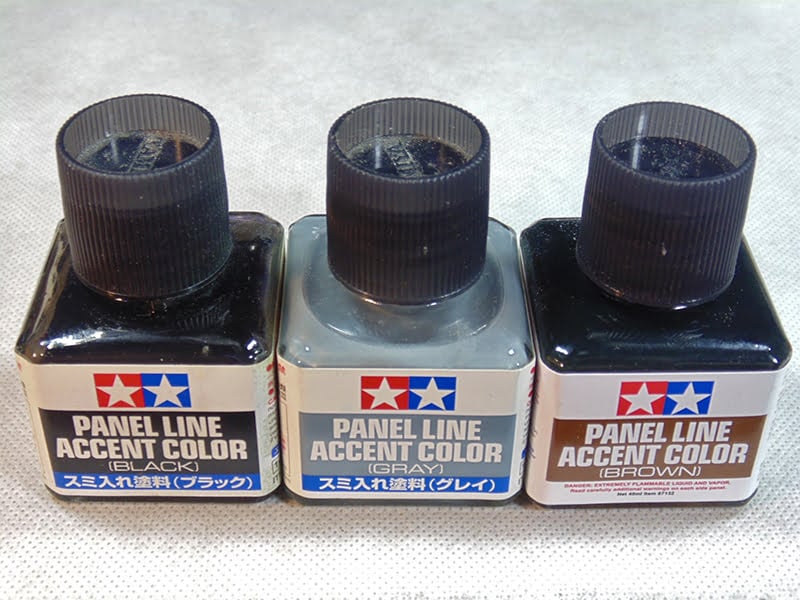
Tamiya’s accent colors are more commonly known as washes. The manufacturer uses extremely fine pigments which are loosely suspended in an enamel carrier. This means you need to, just like with all washes, stir them often and completely. A quick look at the bottom of the jar will let you know. You’ll always need to shake the jar just before you want to add a dab to the spot needing it with the supplied brush.

Let’s begin with the basics. Here’s the rudder of a 1/48 B-17 Flying Fortress. Some of the models Sunward Hobbies sell have coloured plastic parts, so if you simply want to add some depth and detail to your model here’s what to do.
Start at intersecting points, such as where panel lines meet. Unscrew the cap and touch the shaft of the brush to the inside of the jar’s mouth, removing the excess. Then, gently dab the brush on that point and watch how the Panel Line Accent Color flows along those lines. It may be just a little or it might flow for a centimeter. Continue to shake the jar then dab again until you’re satisfied that all the lines have the desired intensity. Keep in mind all darker colors dry back lighter and may need another application.
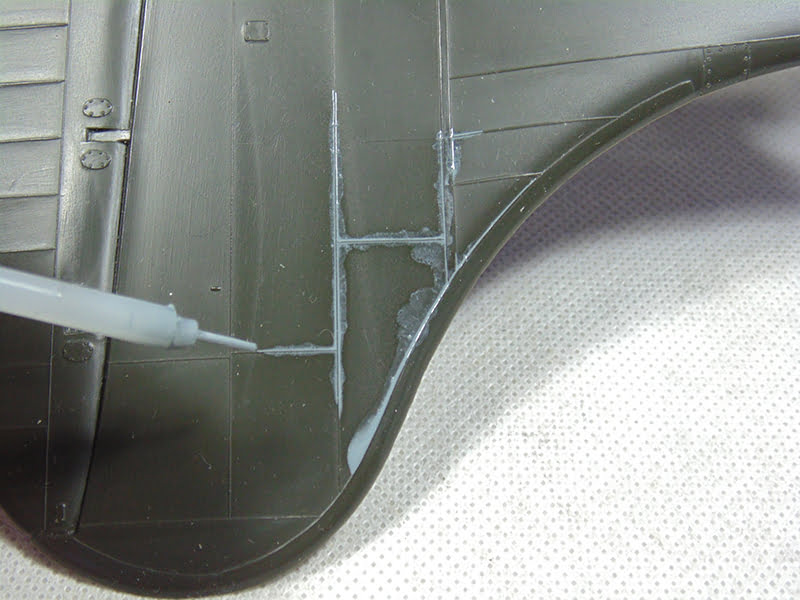
The next step is very important. *Let it dry! *Drying time is around 30 minutes, yet I’ve found an hour to be best if I have thicker recessed lines or taller raised details. If it isn’t dry then you will wipe what’s moist right off and have to begin again in that spot.
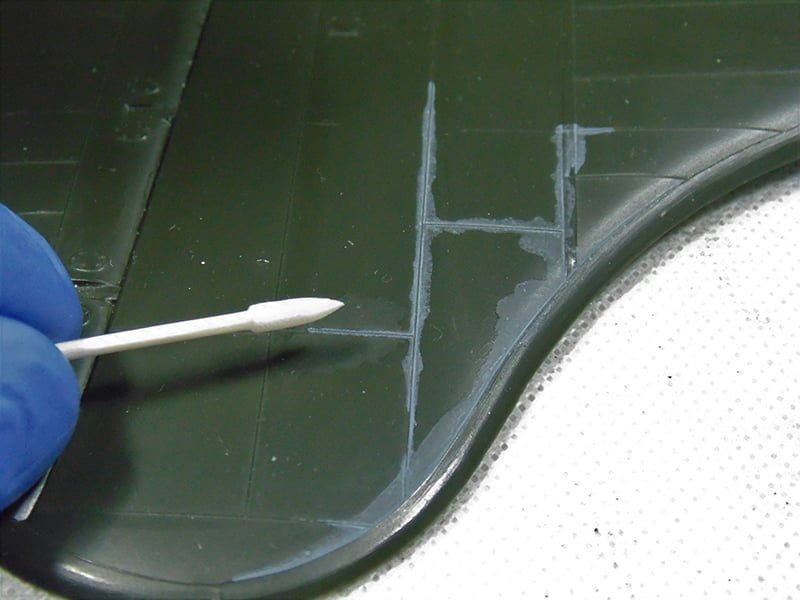
Then, take a good quality cotton swab and dip it in your enamel thinner. Tamiya have X20 thinner available at Sunward Hobbies, but I didn’t have any on hand so I used some Abteilung 502 Odourless Thinner I’d previously purchased. They work the same and you’ll get the same results I do. Remove as much thinner as you can, making the swab barely moist. The more you use the product the more you’ll get a feel for how wet or how dry the swab should be. It just depends on the amount of accent colour needing to be left in that spot. I recommend the hobby brand pointed ones because they don’t leave lint behind and can get into really tight corners.
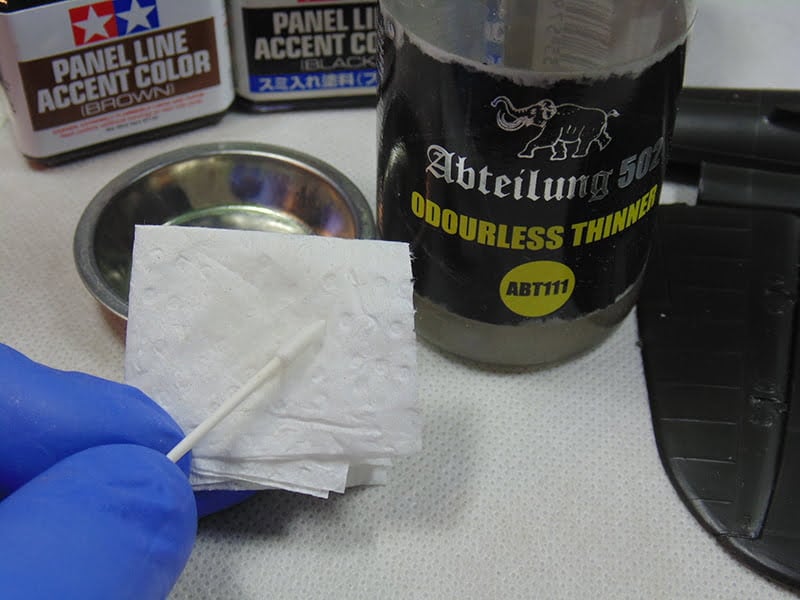
Next, you’ll begin to remove the excess. Work 90 degrees against the direction of the line when you can. Rubbing the same direction will, in many cases, remove the wash entirely. Don’t press too hard, remember you’re just adding thinner. After a few strokes the pigment will rehydrate and begin coming away. Turn your cotton swab often to a clean spot and replace it when it’s covered with pigment.
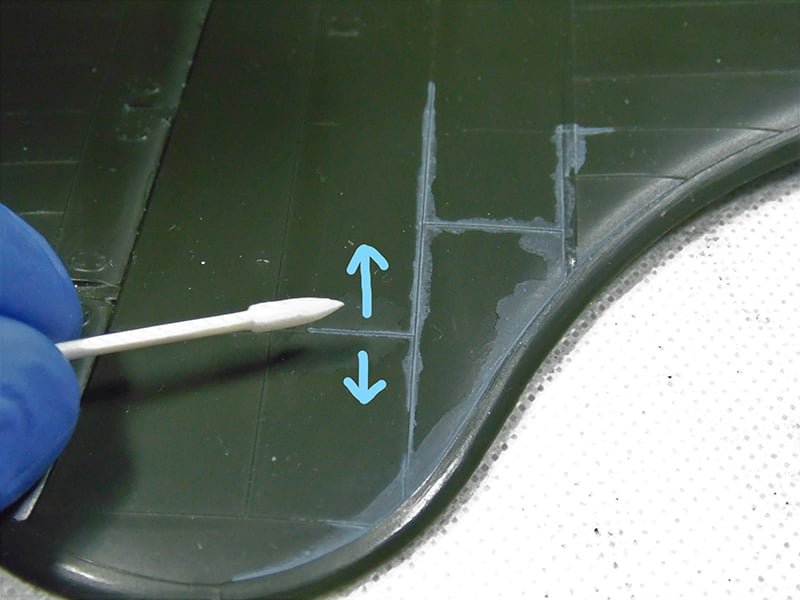
When you’ve completed remove the bulk of the excess there will be some residue. Now you may opt to leave this as a weathering effect, clean it up a little as a “post shade” or get rid of it entirely. It all depends on the look you’re after.
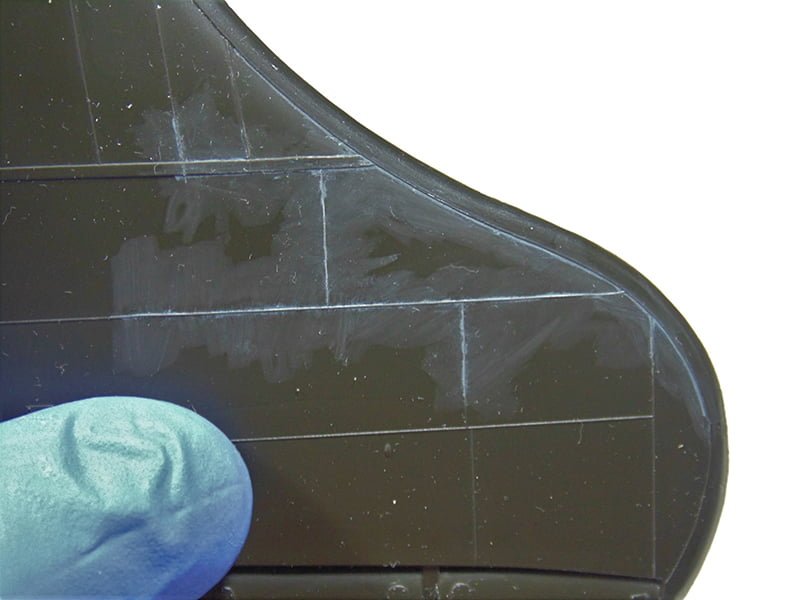
To remove it, simply take the piece of paper towel used to dry your cotton swab and wipe the area down. And there you have the basics, shake, drop, dry and clean.
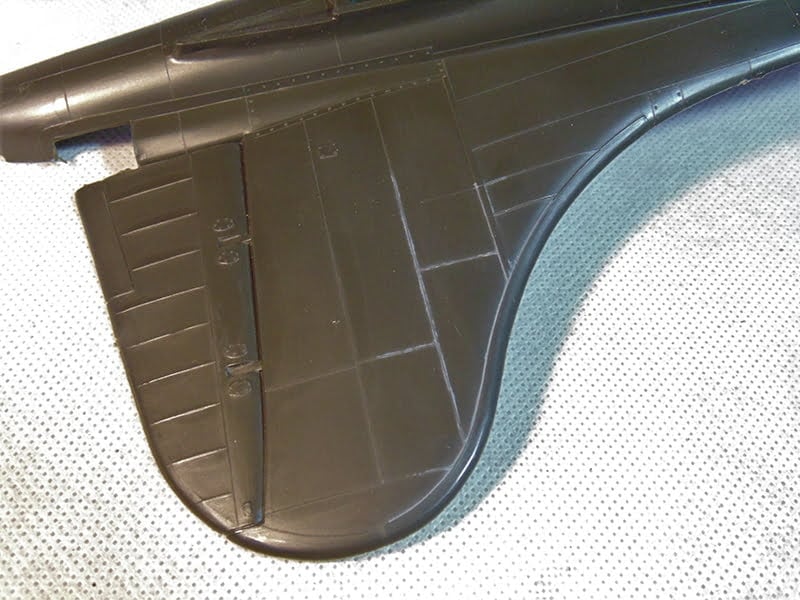
Now let’s get a little more organic. One of the great features about these products is blending it for a more idea shade. Sometimes light grey is too bold. In this picture you can see I’ve cut the ratio 50/50 in a mixing cup. This will give that spot a look of being hit by the muddy wind of propeller air-wash.
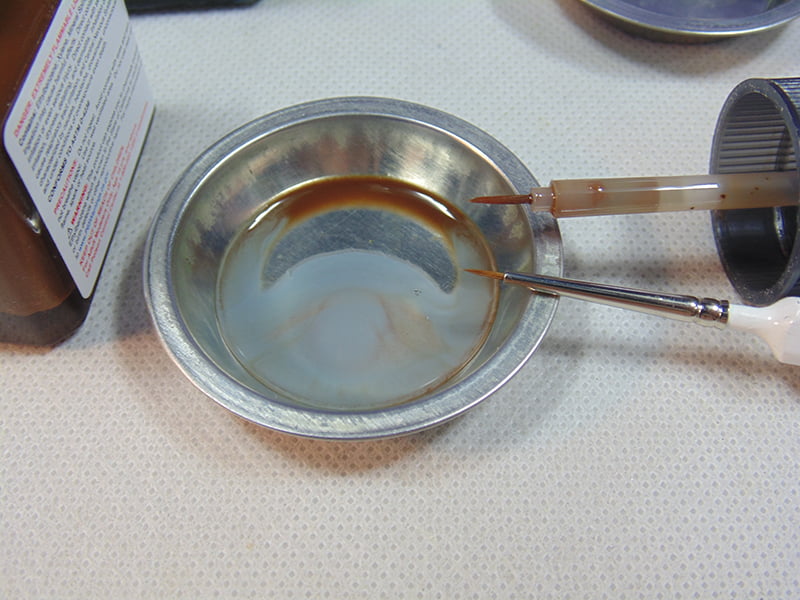
As you can see in the picture there’s quite a difference between the two color tones. The lighter looks as though rain had collected then dried while the softer brown has that earthy look. The point is you can have multiple shades and not be restricted to one.
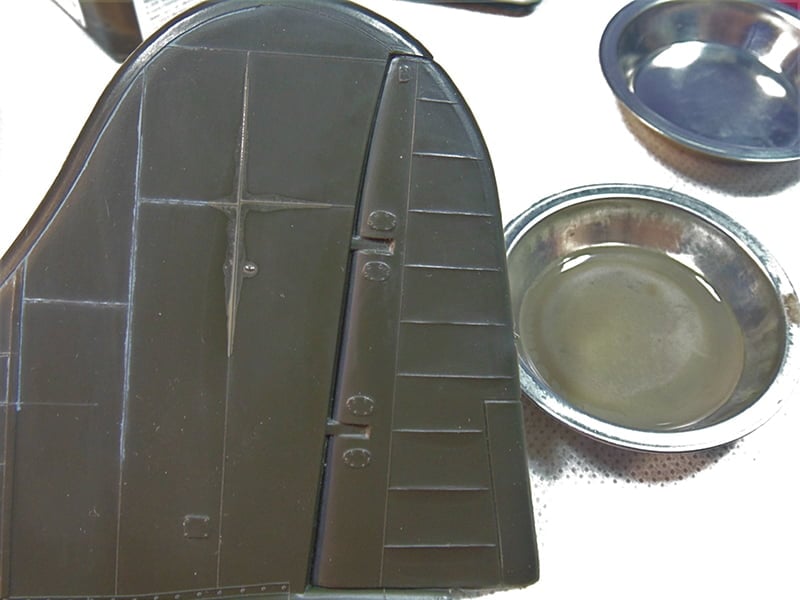
Just as with the brown the black can be lightened or the grey can be darkened. Here are 5 drops of grey to 1 black.
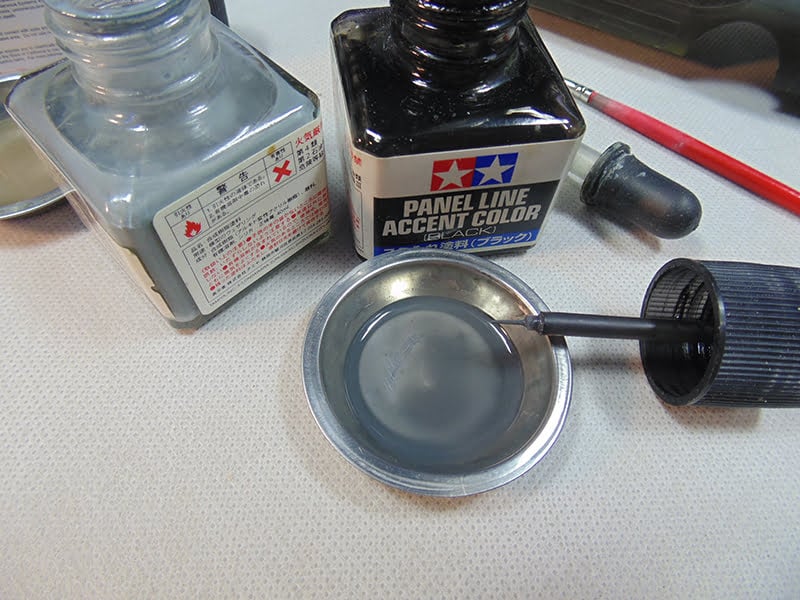
Once again, the part takes on a different look.
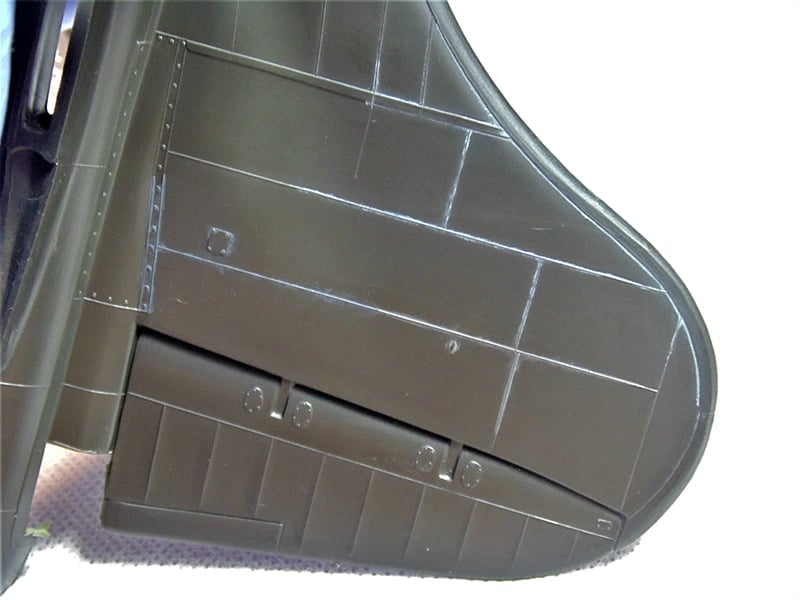
With the introduction over we can move to a real-world example. All the products used in this tutorial are available at Sunward Hobbies, so there’s no magical hidden formula or nonsense. Again, the stuff I’m using is the same you’ll be buying. Here’s a Tamiya 1/48 Russian Shturmovik WWII aircraft.
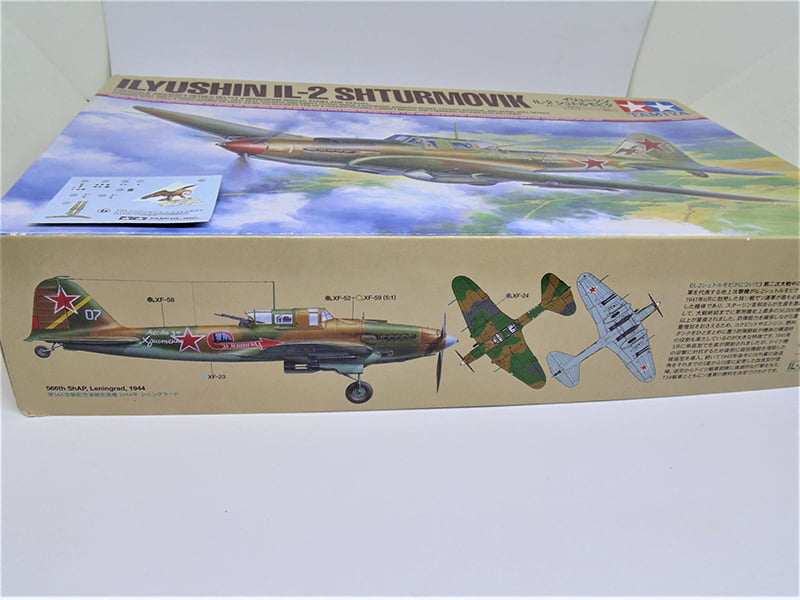
I’m going to open a sealed bag and prep a fresh piece of plastic with Mr. Primer Surfacer 1000. The tutorial on that product has been already posted if you need to know how to use it.
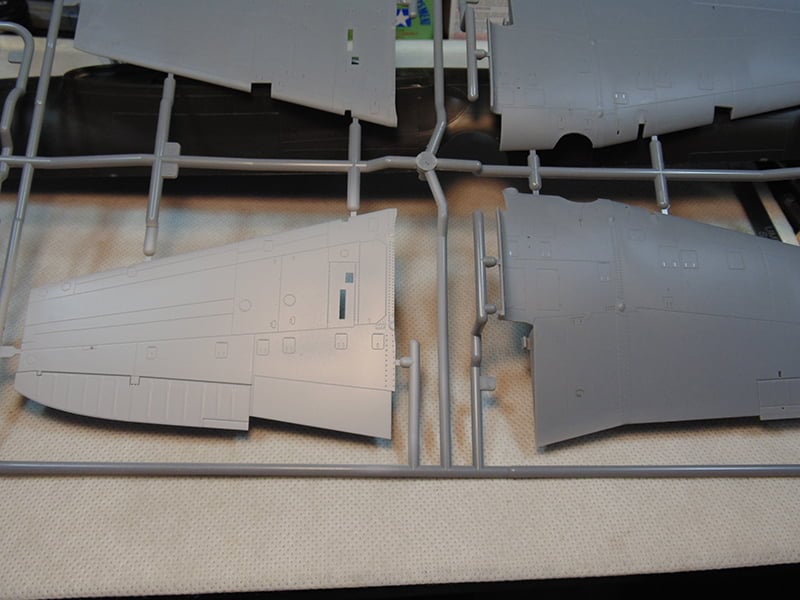
Next, I’ve sprayed the part with AK Interactive Real Colors Air Superiority Blue, masked and sprayed semi gloss then gloss clear coat.
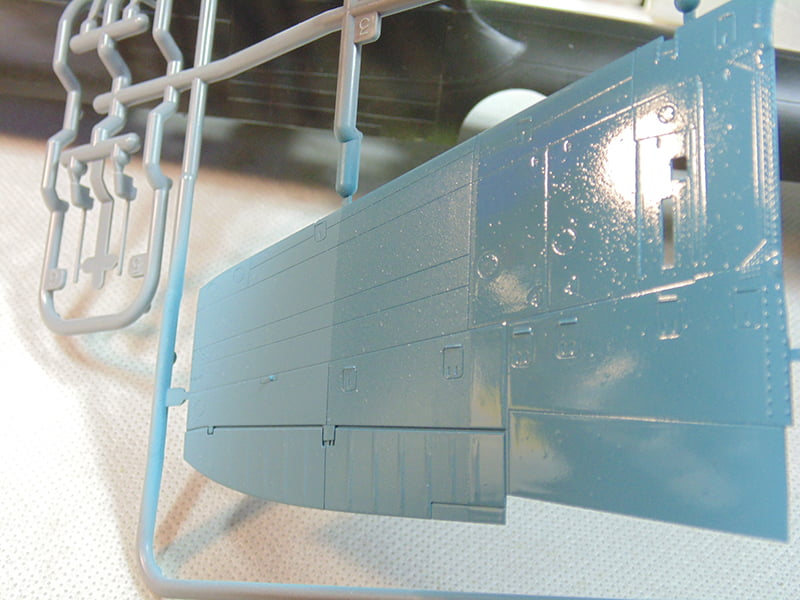
Once these clear coats have fully dried in an hour or so the Tamiya Panel Line Accent Color can be safely added. It’s critical to let them dry or you risk rubbing the Tamiya pigment into the unhardened clear coat.
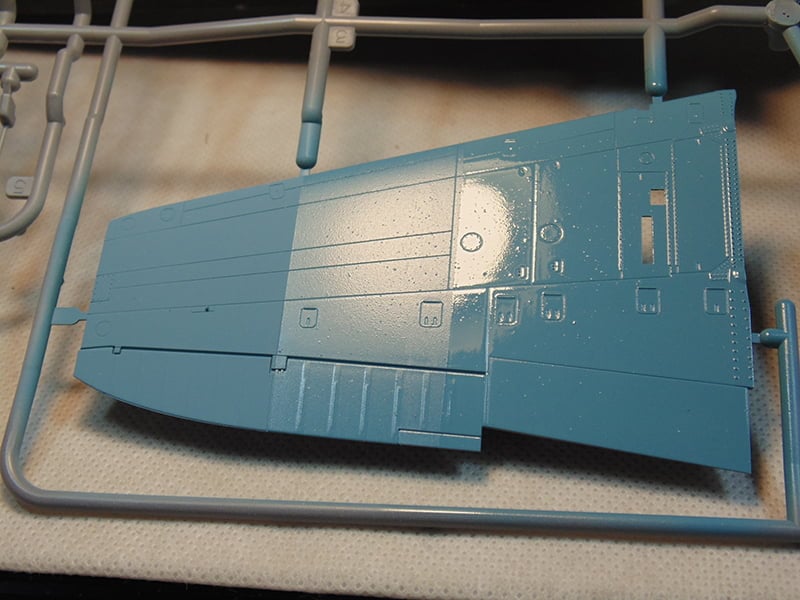
This picture shows what can expected on flat paint. Notice how the brown has flowed down the panel lines?
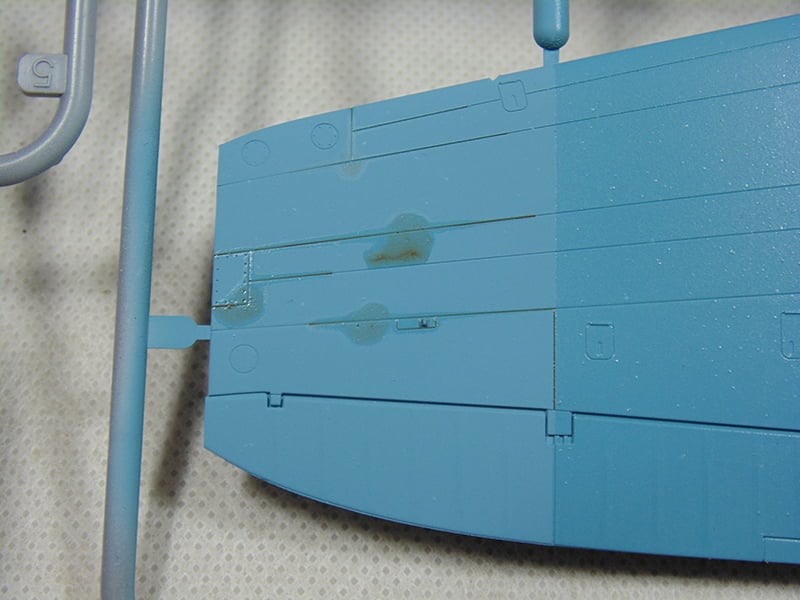
And the same thing occurs with the semi and gloss coated sections. Now the all-important time to dry.
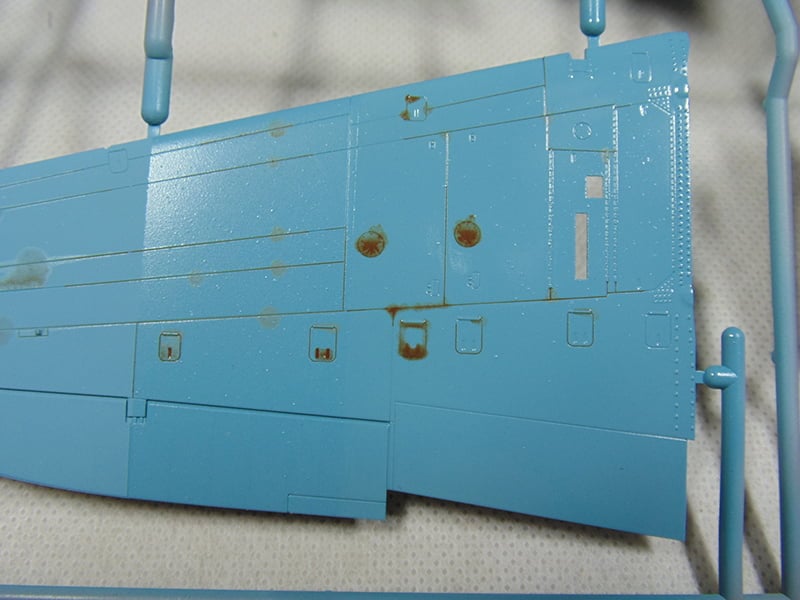
Use the same method for removing the excess as explained above, yet for raised bolts and rivets a fine brush will allow you to get in between those without removing the needed accent color.
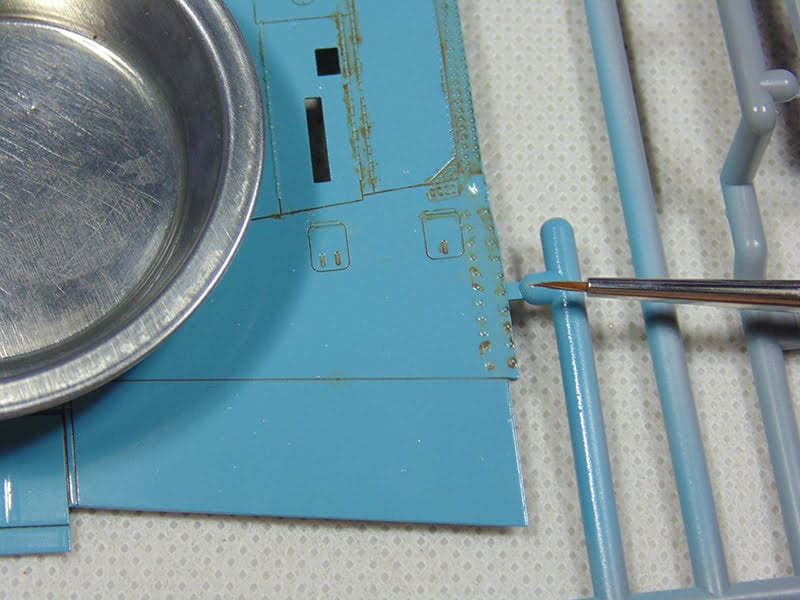
And here’s the result. More can be added or removed, if wanted.
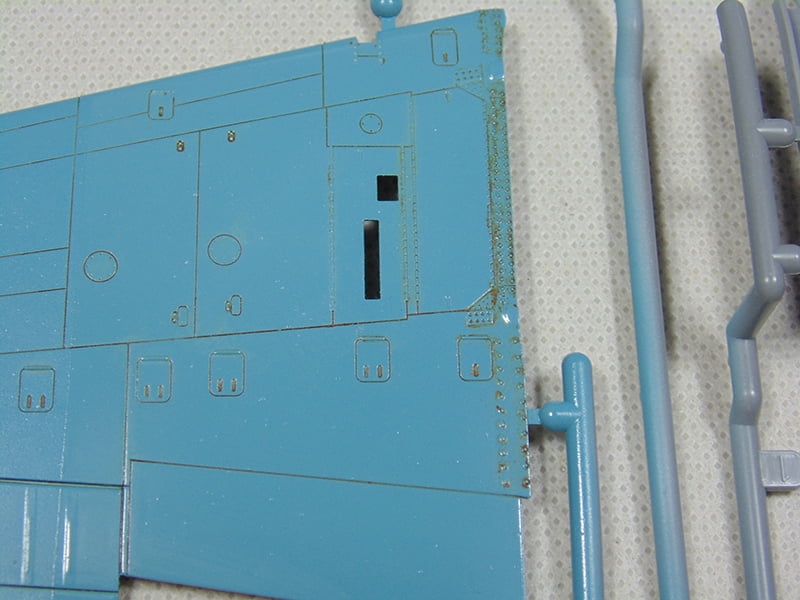
With the wing part in full view, you can clearly see that uncoated wing tip area refused to give up all the pigment, leaving a brown hue. Notice the difference below on the clean aileron? Once again, it all boils down to which look you want. Be cautious, rubbing too much on bare paint will remove some of it.
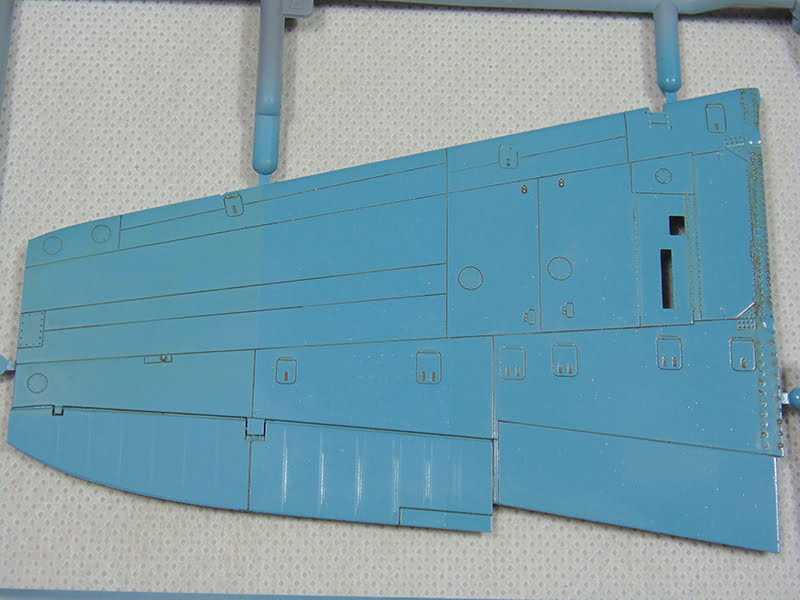
Lastly, I took the time to scribe the panel lines and rivet the rudder of the B-17 Flying Fortress. Then it was primed and sprayed light sky grey and given a mat clear coat. After the prep work had dried, I used the brown color to accentuate my detail work.
Notice the difference between the pronounced detail in the lower part of the picture vs the bland upper half of the photograph? A much-improved look, something simple to do and takes very little time to pull off.
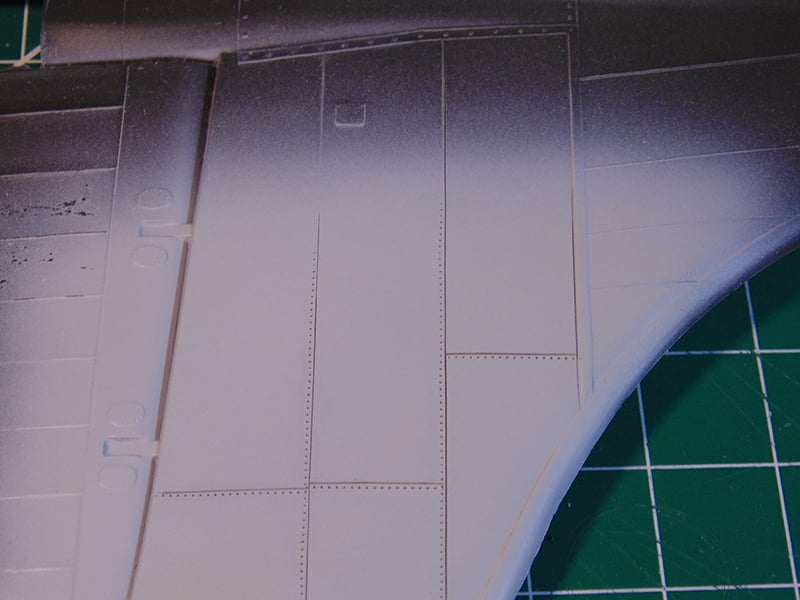
Here’s an added tip, if you’re doing the entire model, or a good portion of it, I suggest using an eye dropper or pipette and put 5 or 6 drops in a small cup. Using either the cap brush or your own you can mix it more conveniently instead of shaking the bottle every time it’s needed.
If you need any further advice please ask when you pick up your next order of Tamiya Panel Line Accent Colors.
H.G. Barnes is a former voice-over artist and retired sales and marketing professional. He’s the author of two large volume science fiction adventure romance novels with many more in the works. For well over 40 years he’s been building scale model replicas and now does commission work for clients in Canada and the USA, plus completes projects for companies in Asia and Europe.
Actuellement, HG est impliqué en tant que rédacteur associé avec les chaînes de magazines en ligne de KitMaker Network.
